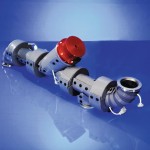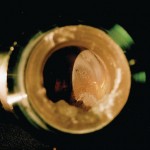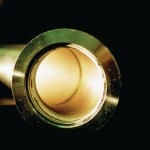Tube heaters have a critical impact on process results when used with temperature-sensitive media or processes. Watlow’s gas and pump line heaters are characterised by their precise distribution of heating power. This is achieved firstly by adapting the watt density to specific requirements and secondly by controlling the temperature of the heaters. Together with the insulation of the heating jacket, this leads to energy savings because only the amount of power actually required is introduced into the thermal system.
Nathalie Klak
Heating and temperature control of media play an important role in modern process engineering because many processes can only take place within a specific temperature range. Since raw material is generally delivered to the process chamber – and reaction products removed from it – via tubing systems, it is essential to maintain the delivery and exhaust lines at a defined temperature. The narrower the temperature window for the processes, the greater the importance of an optimal tubing temperature. Against this background, precise temperature control along the tubing is vital for good process results.
Easy to install
Watlow has developed a heating system that guarantees full coverage of the tubing and hence a uniform temperature. The heating elements can be used at temperatures up to +200 °C and are available for different nominal voltages. The heart of this so-called gas and pump line heating system is a heater jacket made from fibre-glass reinforced silicone material, insulated on the back, with snap or Velcro fasteners for simple assembly and disassembly. Thanks to this design, time-consuming wrapping of heat tracing around the tubing and subsequent insulation are now redundant. Moreover, each heating jacket is equipped with plugs that ensure easy connection between the individual heating jackets as well as to the control unit. Thermocouples or RTDs can be attached to the heating elements to facilitate temperature measurements. The system is rounded off by a control unit featuring a PID temperature controller and semiconductor power switch. As an option, the control units can also be connected to a PC for configuration and data logging with an HMI software package. The gas and pump line heaters are available in different diameters, lengths and geometries as standard. Elbows, flanges and T-sections can likewise be covered and heated using standard jackets. Provided the most suitable heater jackets are chosen, the complete surface of the tubing is heated.
Problem areas
The majority of tubing systems integrate additional components like pumps, valves or other equipment that create particular challenges for uniform temperature control. It is these components that produce the biggest heat losses and their geometry is often highly asymmetrical, which makes efficient heating extremely difficult. However, it is particularly important that these components should be heated sufficiently, because condensation and precipitation have a tendency to occur in these areas. This is due to the thermal properties of the components, which differ substantially from those of ordinary tube sections. In such cases, simple wrapping with heat tracing fails to yield the desired results, so that a precise adjustment of the heating element to the component becomes necessary. This adjustment is not limited to the geometry of the heater jacket, but also must consider heat losses at these locations. The power and power density of the heater jacket must therefore be aligned to the specific thermal conditions.
The much higher heat losses in relation to ordinary tube sections – especially at valves – demand a higher power input per surface unit. The heating jacket sometimes has to be equipped with an additional temperature sensor and operated in a separate control loop – notably if the thermal properties of the valve are significantly different from the rest of the tubing system.
Example
The following example emphasises the importance of tube heating for thermally critical processes. Figure 2 shows the exhaust lines of an aluminium etching tool as used in semiconductor manufacturing. Insufficiently heated tubing can be seen on the left, while the photograph on the right depicts a fully heated tube. The formation of aluminium chloride, which precipitates along the walls of the tubing, is critical in this process.
This precipitation leads to a successive reduction in the tube cross-section and is a source of particles that can negatively impact the results of the process, which takes place under clean room conditions. It also causes unscheduled maintenance cycles, which generate high costs due to equipment downtime. Precipitation cannot be prevented by using conventional heating cables because full coverage of the tube – and thus a uniform temperature – are no longer achieved.
Online-Info www.cpp-net.com/2210425
Share:









